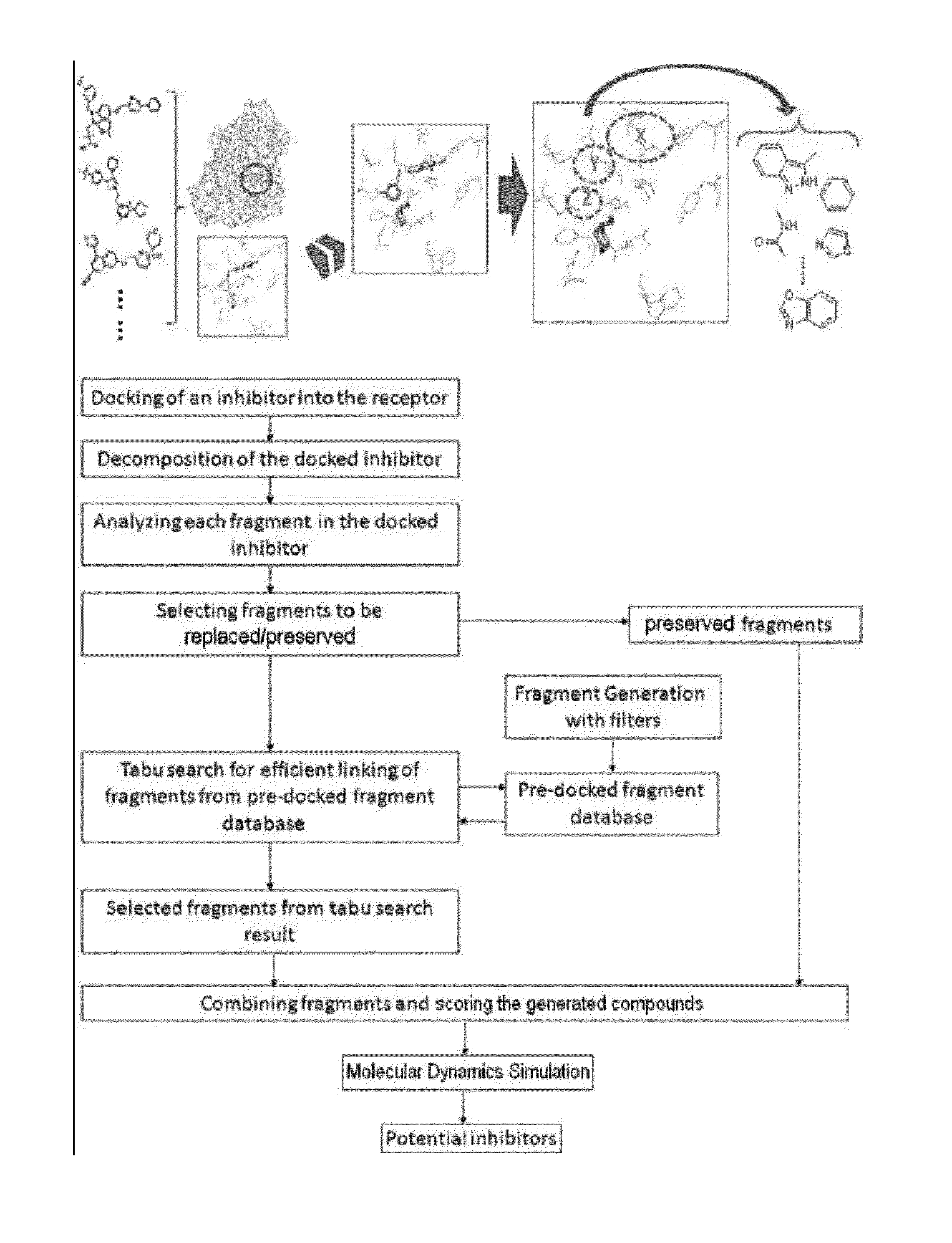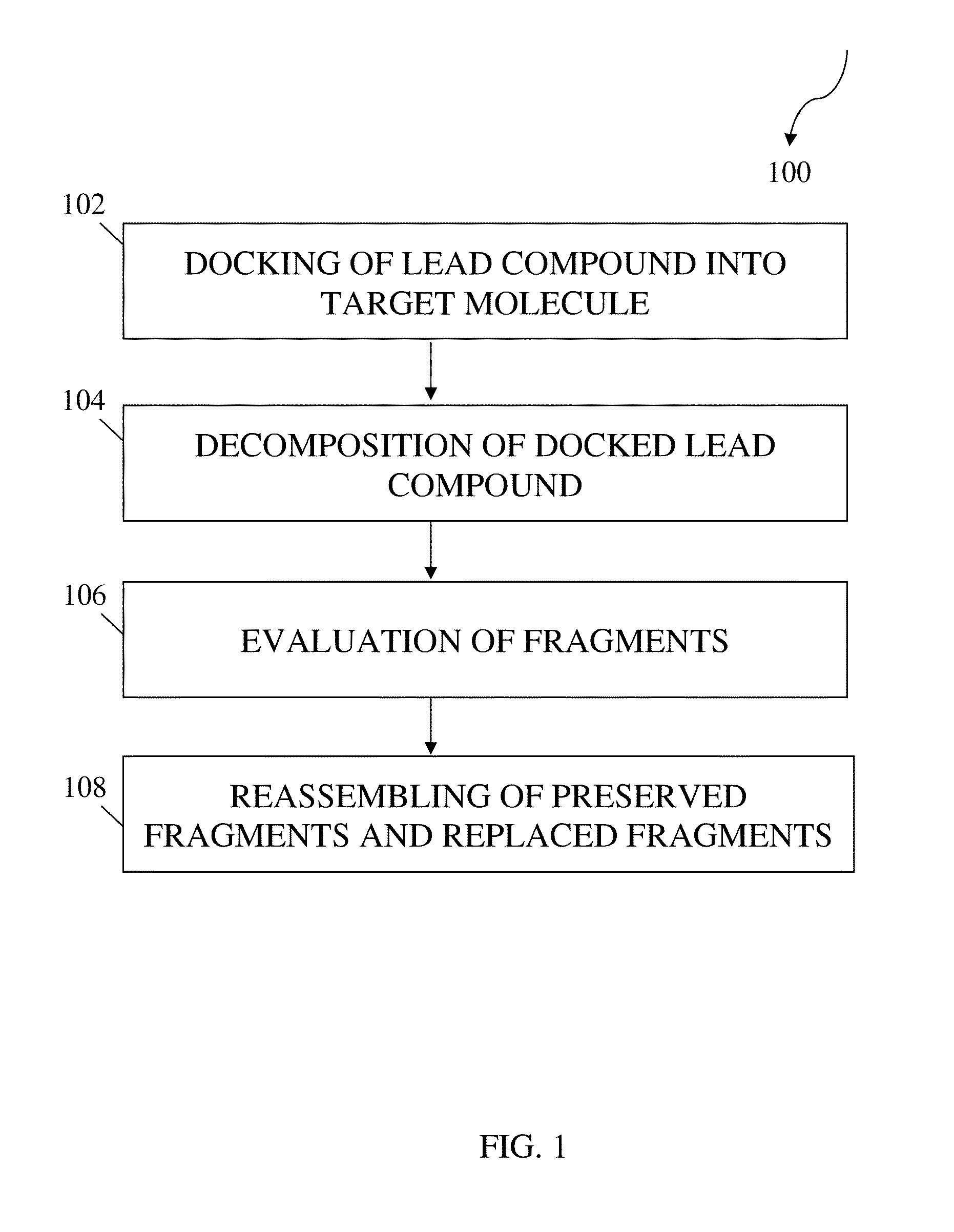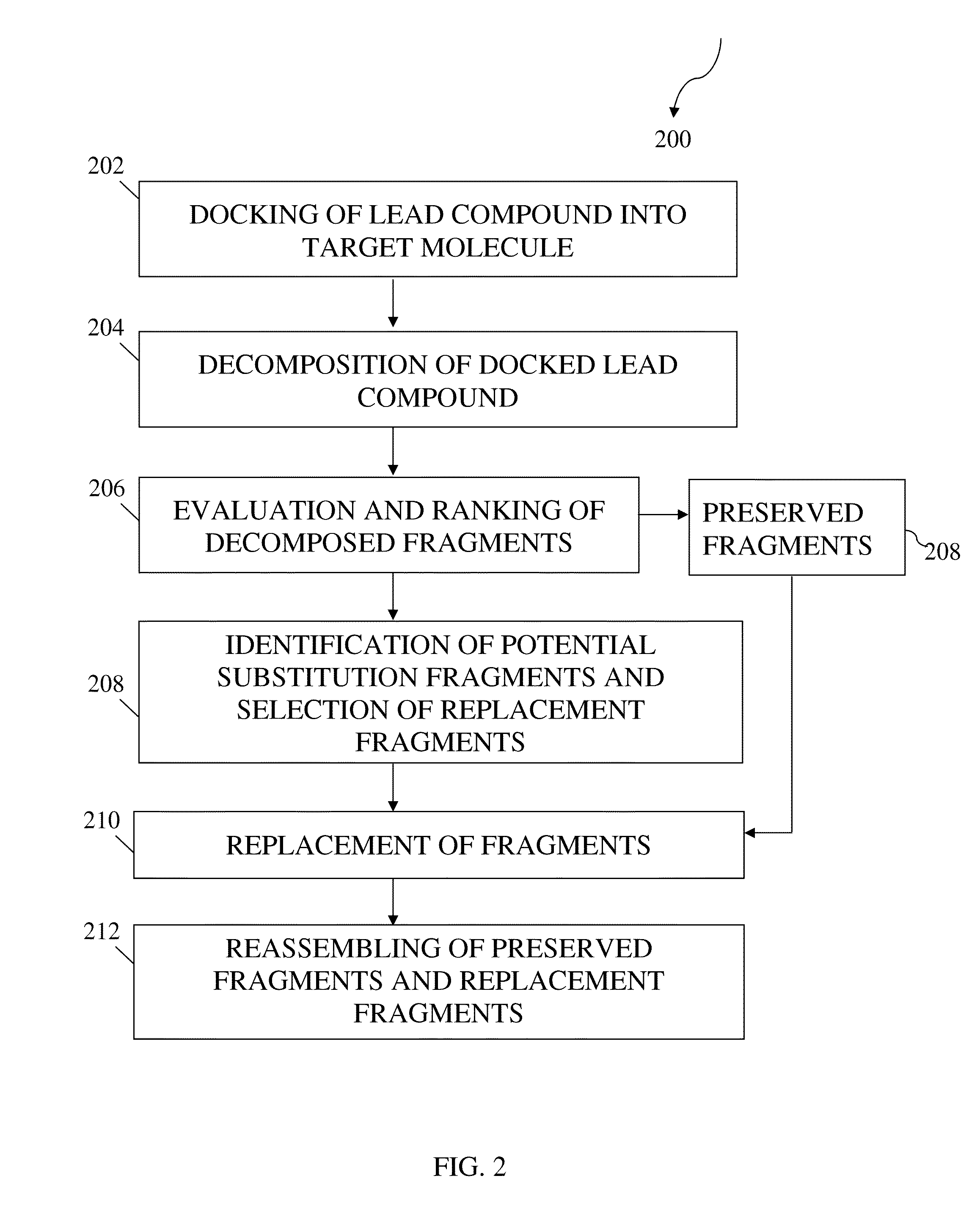Structure-based fragment hopping for lead optimization and improvement in synthetic accessibility
a technology of structure-based fragments and optimization, applied in the field of computer-aided molecular design, can solve the problems of slow feedback-improvement loop between experimental syntheses and modeling design, inability to easily preserve the desired core of potential inhibitors, and long process tim
- Summary
- Abstract
- Description
- Claims
- Application Information
AI Technical Summary
Benefits of technology
Problems solved by technology
Method used
Image
Examples
example 1
LeadOp for Structure-Based Fragment Hopping of B-Raf Inhibitors
[0118]For the B-Raf inhibitors example, a mutant B-Raf and a ras activated proto-oncogene serine / theronione protein kinase were selected. An aminoisoquinolines series of mutant B-Raf pathway inhibitors was investigated in the prior art (Smith, A. L.; DeMorin, F. F.; Paras, N. A.; Huang, Q.; Petkus, J. K.; Doherty, E. M.; Nixey, T.; Kim, J. L.; Whittington, D. A.; Epstein, L. F.; Lee, M. R.; Rose, M. J.; Babu, C.; Fernando, M.; Hess, K.; Le, Q.; Beltran, P.; Carnahan, J. Selective Inhibitors of the Mutant B-Raf Pathway: Discovery of a Potent and Orally Bioavailable Aminoisoquinoline. J. Med. Chem. 2009, 52, 6189-6192), and a cocrystal structure of inhibitor LW with B-Raf shows the interactions in the B-Raf active site (PDB ID: 3idp). In this cocrystal structure, the purine group of LW forms several stabilizing interactions with the receptor: (i) two hydrogen bonds with Cys532 of B-Raf (one with the backbone amine and the ...
example 2
LeadOp for Structure-Based Fragment Hopping of Human 5-Lipoxygenase Inhibitors
[0121]The human 5-lipoxygenase (5-LOX) enzyme with the well-known 5-LOX inhibitors was selected as the second LeadOp test case. To design better 5-LOX inhibitors, structural insight of the 5-LOX active site and its associated interactions with ligands would be helpful; unfortunately, the crystal structure of this enzyme has yet to be elucidated. We selected a theoretical model (comparative / homology protein structure / model) of 5-LOX (Charlier, C.; Henichart, J.-P.; Durant, F.; Wouters, J. Structural Insights into Human 5-Lipoxygenase Inhibition: Combined Ligand-Based and Target-Based Approach. J. Med. Chem. 2006, 49, 186-195) that has good agreement with mutagenesis studies. The proposed active site of 5-LOX forms a deep and bent cleft that extends from Phe177 and Tyr181 on the top of the cleft to the Trp599 and Leu420 at the bottom (shown in FIG. 7). Most of the residues lining the cleft are hydrophobic wi...
example 3
LeadOp+R Optimization for Tie-2 Kinase Inhibitors
[0150]Structure-Based Lead Optimization with Synthetic Routes
[0151]From the literature (Bridges, A. J. Chem. Rev. 2001, 101, 2541), it is known that a good kinase inhibitors should possess a hydrogen-bond donor / acceptor / donor motif to best interact with the backbone carbonyl / NH(amide) / carbonyl presented in the ATP-binding cleft. In the case of Tie-2 kinase, the residues in the active site of the ATP-binding cleft are Ala905 (carbonyl and amide NH) and Glu903 (carbonyl). Additionally, two hydrophobic pockets are part of the active site in the Tie-2 receptor and are designated as the first hydrophobic pocket (HP) and the extended hydrophobic pocket (EHP). We selected a series of Tie-2 inhibitors from the literature (Bridges, A. J. Chem. Rev. 2001, 101, 2541) containing a co-crystal structure of inhibitor compound 47 with Tie-2 receptor (PDB code: 2p4i). In this co-crystal structure, the 2-(methylamino)pyrimidine ring of inhibitor compou...
PUM
 Login to View More
Login to View More Abstract
Description
Claims
Application Information
 Login to View More
Login to View More - R&D
- Intellectual Property
- Life Sciences
- Materials
- Tech Scout
- Unparalleled Data Quality
- Higher Quality Content
- 60% Fewer Hallucinations
Browse by: Latest US Patents, China's latest patents, Technical Efficacy Thesaurus, Application Domain, Technology Topic, Popular Technical Reports.
© 2025 PatSnap. All rights reserved.Legal|Privacy policy|Modern Slavery Act Transparency Statement|Sitemap|About US| Contact US: help@patsnap.com



